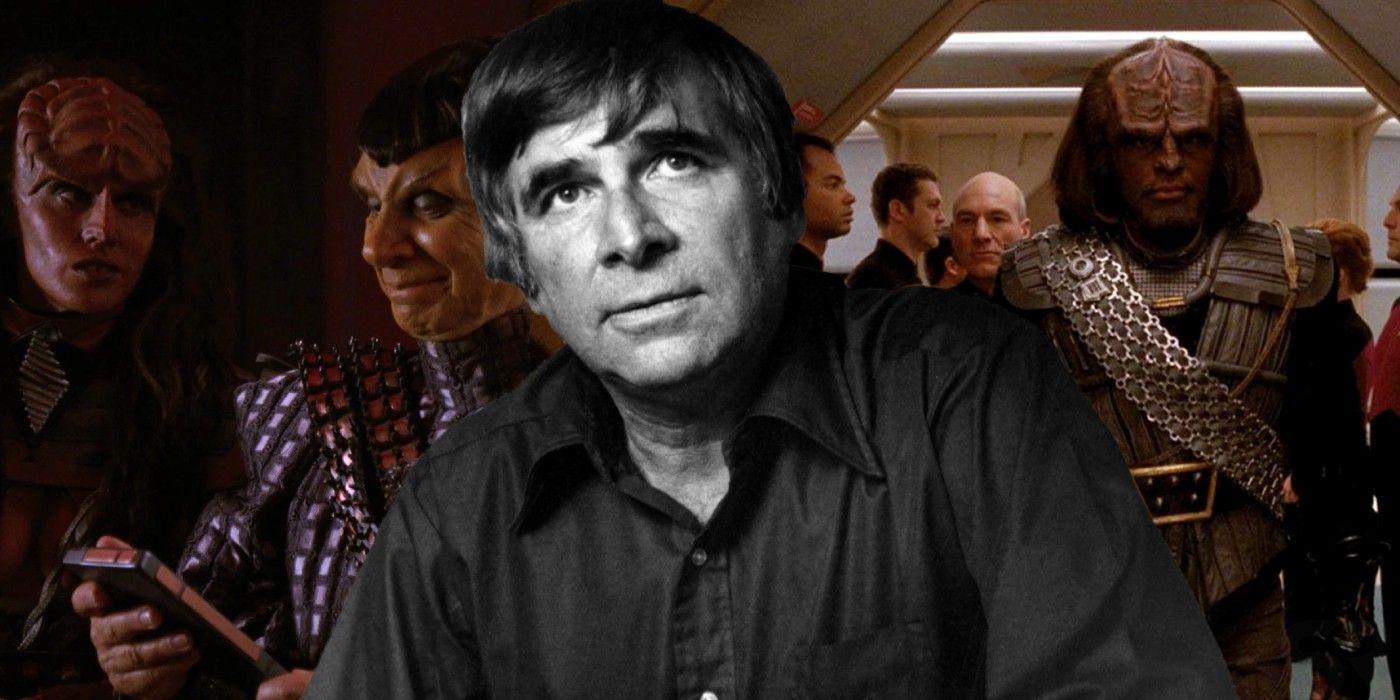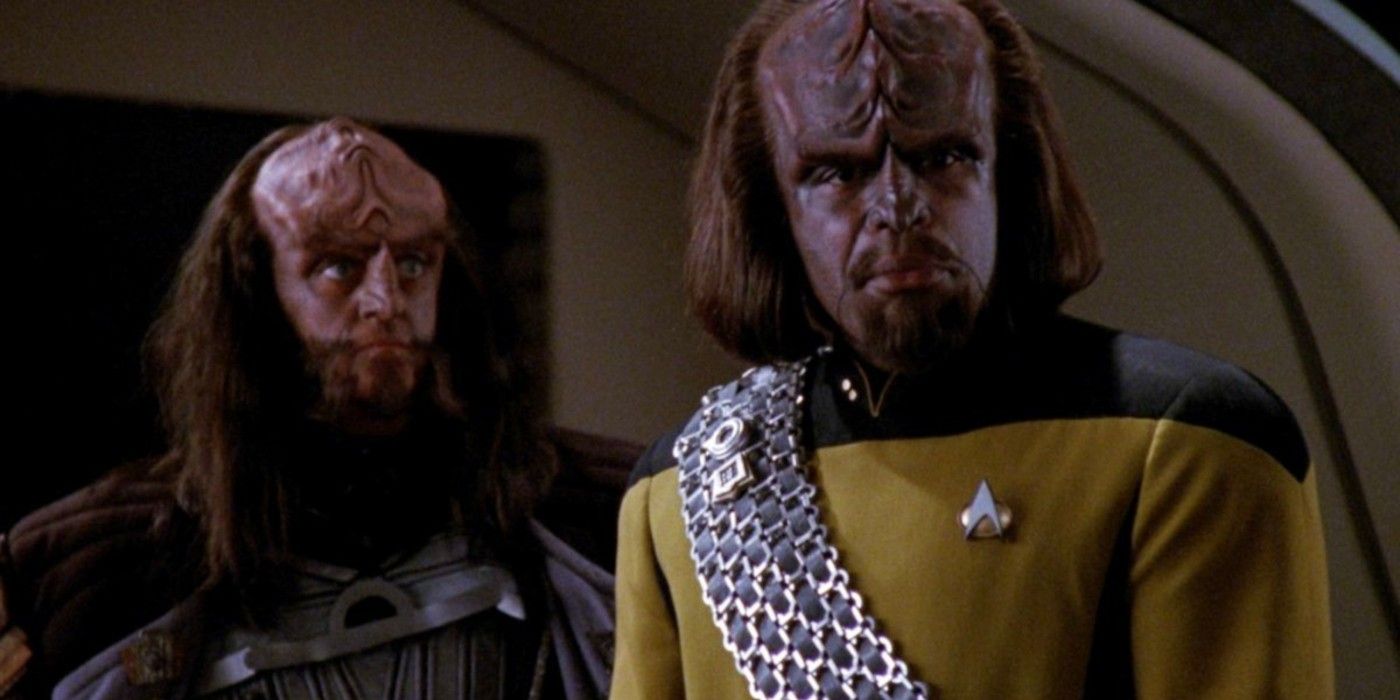Star Trek: The Next Generation's season 4 finale, "Redemption", was almost canceled by Gene Roddenberry, who had multiple objections to the episode's focus and plot. The Next Generation was the second show in the Star Trek franchise and the last one that Roddenberry worked on before his death in 1991. The series focused on Captain Jean-Luc Picard and the crew of the USS Enterprise-D, but through the character of Worf, fans were treated a much more in-depth and nuanced look at one of Star Trek: The Original Series' most famous Starfleet enemies, the Klingons.
Worf was the vehicle for many of the Klingon storylines on TNG, but the creative mind behind those storylines was producer and writer Ronald D. Moore, who was dubbed "the Klingon guy" during his time on the show. Moore has been credited with many of the creative decisions behind Star Trek's current Klingon mythos and was the writer of many Worf and Klingon-centric episodes over the course of TNG's run. This began with the season 3 episode "Sins of the Father", which set up a Klingon arc the reached its culmination in the two-part episode "Redemption", part 1 of which closed out season 4 and served as the series' 100th episode. "Redemption" parts 1 and 2 are often considered some of the best Klingon episodes by TNG's creators and fans, but in an interview with THR, Moore revealed that he had to fight Gene Roddenberry to get the two-parter made.
According to Moore, Roddenberry's main problem with "Redemption" was with the episode's focus being on Worf. Roddenberry didn't perceive Worf as "a primary character" in TNG, despite Worf being part of the main cast. Roddenberry felt that Captain Picard was the series lead, and therefore the character who should get the focus in an episode as important as the 100th. Another big objection of Roddenberry's was about introducing a storyline involving war into Star Trek. The main plotline of "Redemption" involved the developing Klingon Civil War, which ultimately erupted in hostilities during the course of the episode and was resolved by the end. While he was still alive and had creative control over Star Trek, Roddenberry was adamant about depicting a utopian future in the franchise, one without large-scale wars or conflicts. Even though this mandate mostly applied to humans, it's understandable that Roddenberry would have felt uncomfortable breaking it even for aliens like the Klingons.
Moore, along with producers Michael Piller and Rick Berman, had to fight to get the episode off the ground, but finally managed it over Roddenberry's objections. Although some of Roddenberry's points were valid, history has shown that he was ultimately wrong about "Redemption". The episodes are still immensely popular with fans, especially those who enjoy Klingon storylines, and the plot ended up being strong enough to act as a great cliffhanger between seasons. "Redemption" also introduced two classic TNG villains, the Duras sisters, who made their debut in part 1 and would go on to occupy a small but extremely memorable role in the Star Trek canon. In addition to this, the episode acted as the culmination of two important storylines, one being Worf's attempts to be accepted into Klingon society and the other being the continued appearances of Sela, the half-Romulan daughter of an alternate timeline Tasha Yar and another classic TNG villain.
Moore has never stated whether or not Roddenberry came to approve of "Redemption", but the popularity of the episode has certainly made the concerns Roddenberry expressed a moot point. After "Redemption", Moore would continue to expand on Klingon culture over the rest of Star Trek: The Next Generation and went on to produce and write on two other Star Trek shows, Deep Space Nine and Voyager. While Gene Roddenberry might have felt he had good reasons for trying to cancel "Redemption", the episodes ultimately more than proved that they were a story worth telling.


